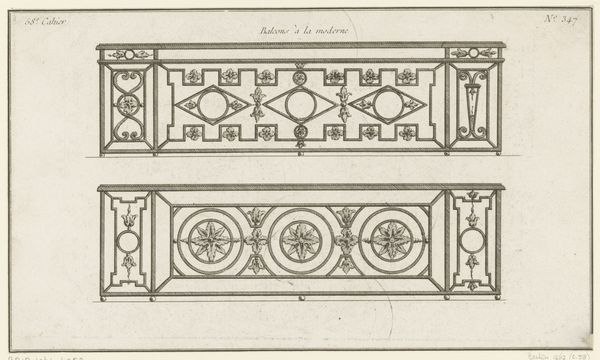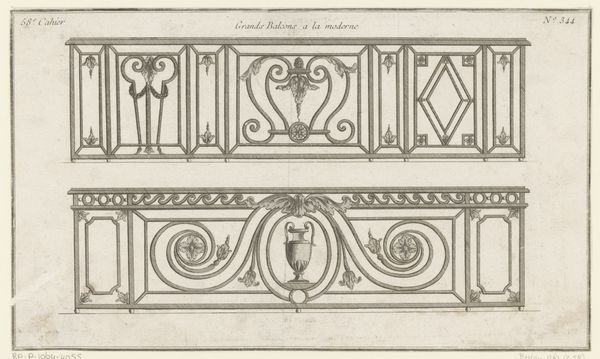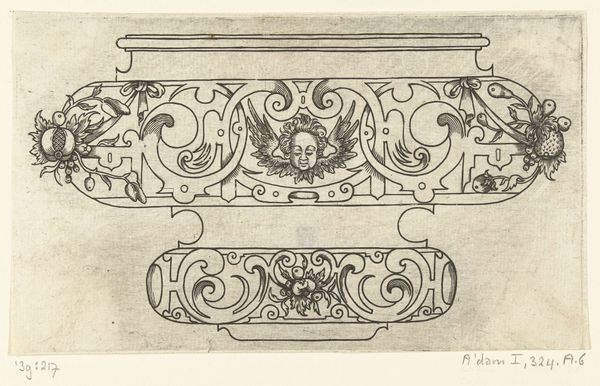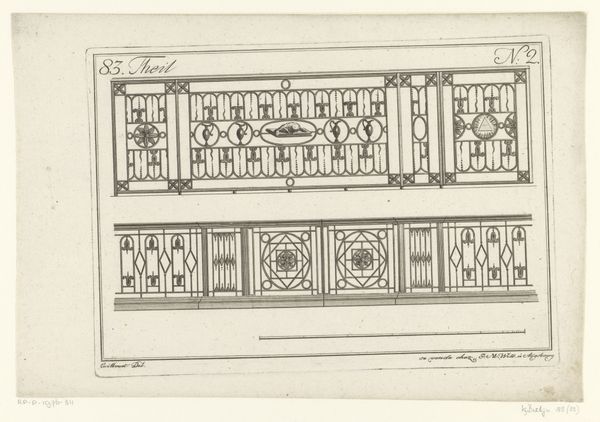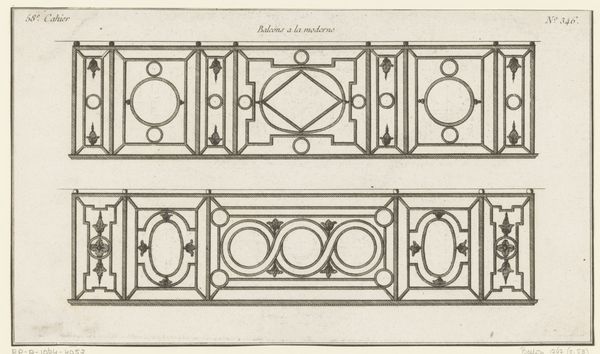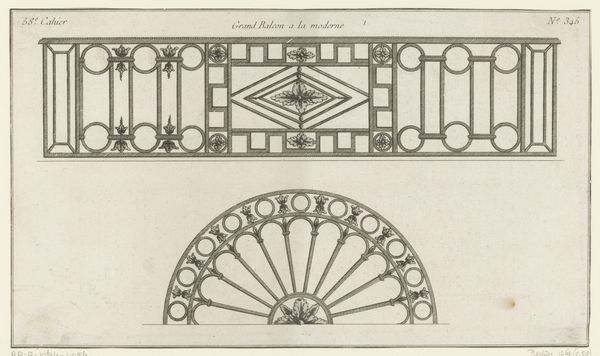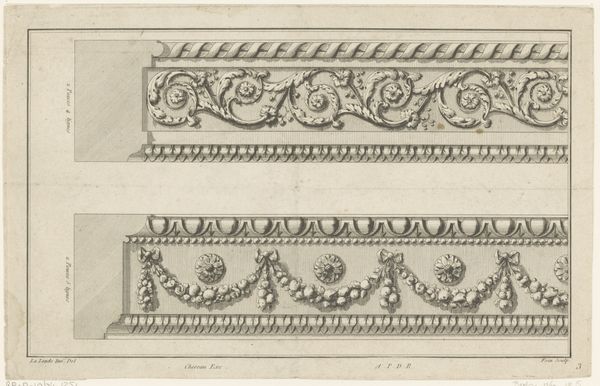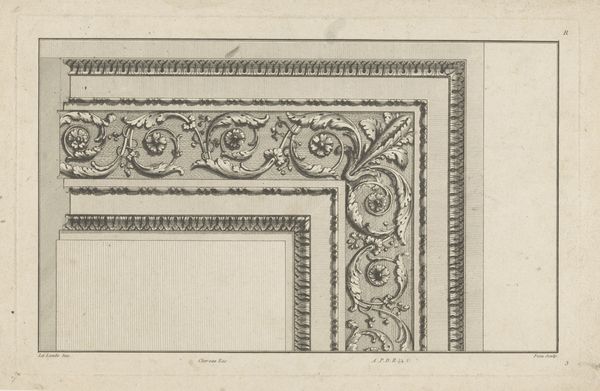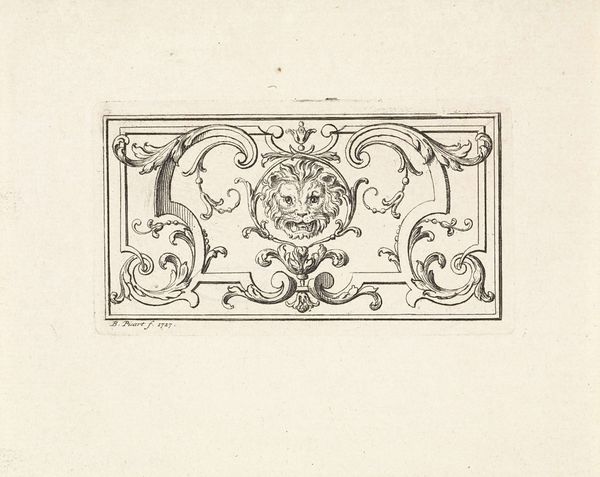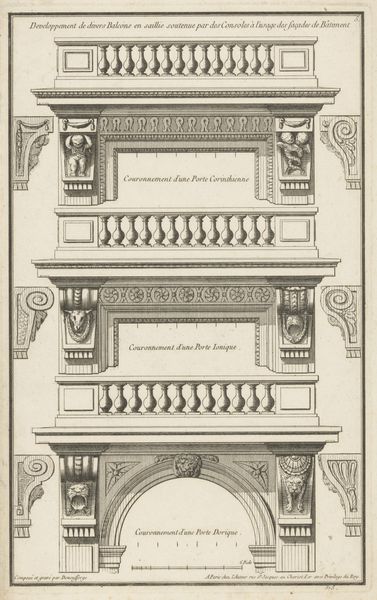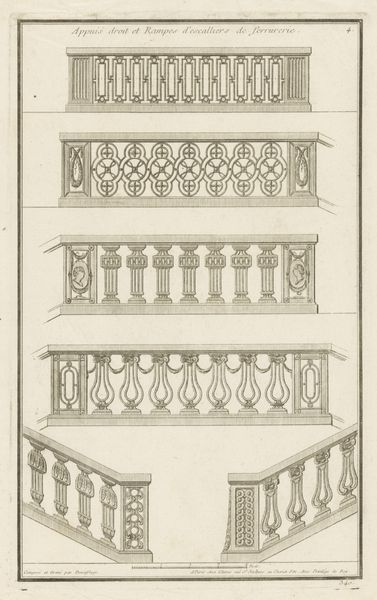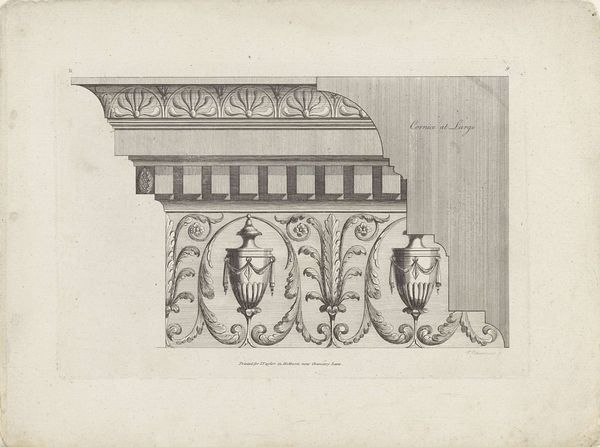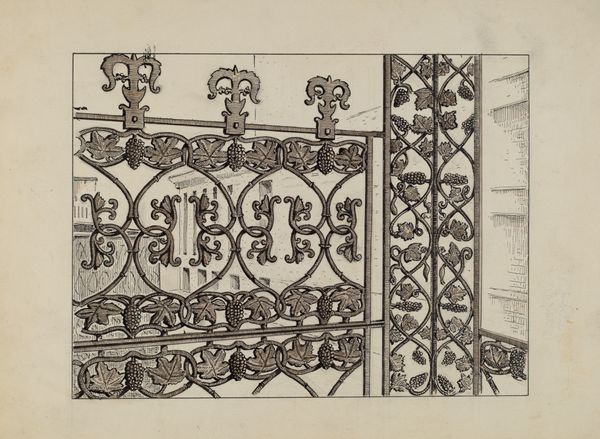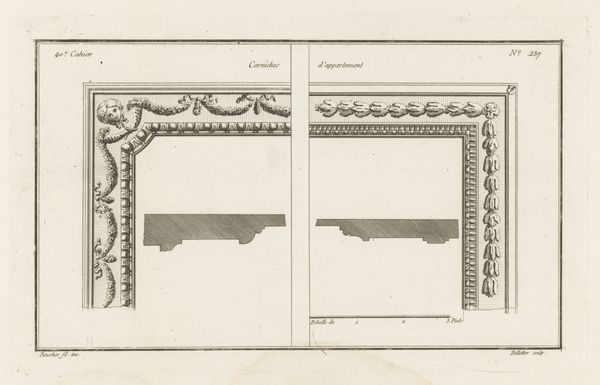
drawing, print, metal, etching, architecture
#
drawing
#
neoclacissism
#
pen drawing
# print
#
metal
#
etching
#
form
#
geometric
#
line
#
decorative-art
#
architecture
Dimensions: height 183 mm, width 305 mm
Copyright: Rijks Museum: Open Domain
Curator: This drawing, "Hekken met bloemmotieven en vaas," translating to "Fences with floral motifs and vase," by Jean Pelletier, dates from 1772 to 1779 and gives us an insight into architectural design of the period. Editor: It strikes me immediately how much the visual interest is concentrated on line and form. There’s a sort of cool detachment, thanks to its precision and symmetry, the monochromatic nature of the print only reinforcing this mood. Curator: Precisely, this piece sits firmly within Neoclassicism, where we see a return to the perceived purity and order of classical antiquity. It speaks to the burgeoning Enlightenment ideals of reason and system. Pelletier presents two distinct design options; through these motifs we can perceive the shift towards valuing restrained elegance but retaining ornamental symbolism. Editor: Notice the arrangement of the lines. Pelletier seems to be creating a rhythmic harmony, drawing the eye from one repeating motif to the next. The etched details give depth. What's particularly intriguing is the combination of strict geometry with flourishes like those swirling leaves. Curator: Right, and consider how these designs might interact within the urban environment, possibly in a garden, framing the lived experiences of those inhabiting those spaces. The ironwork embodies more than just design but, through industrial availability, the capacity of certain classes to express elevated status. Editor: Indeed, this drawing offers a fascinating lesson in semiotics, in how form communicates status and embodies ideals of its time. The careful balance achieved between decoration and austere forms. Curator: Yes. Reflecting on these railings now, I'm drawn to contemplate accessibility and divisions. These designs were certainly aspirational, subtly alluding to socio-economic dynamics defining 18th century society. Editor: It is a beautiful object and your insights on the historical dimensions are certainly welcome, contextualizing what stands at first glance as merely well-formed design into meaningful commentary.
Comments
No comments
Be the first to comment and join the conversation on the ultimate creative platform.
